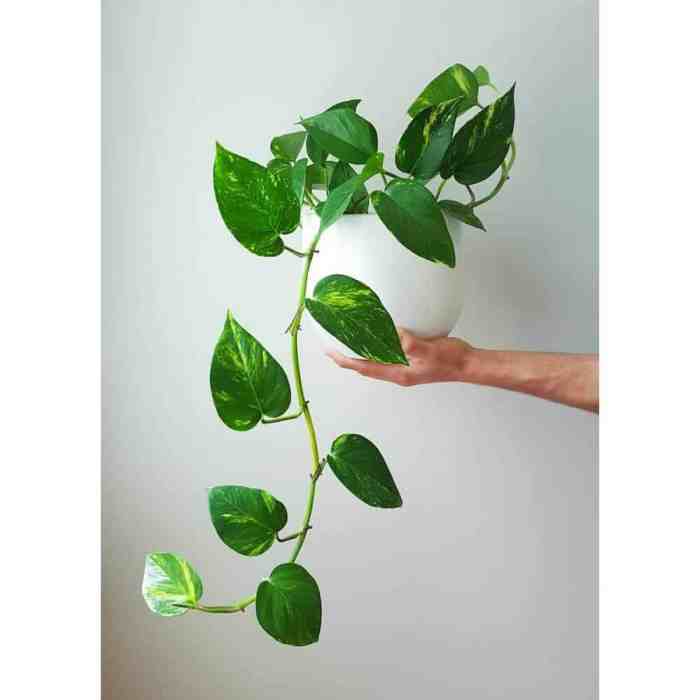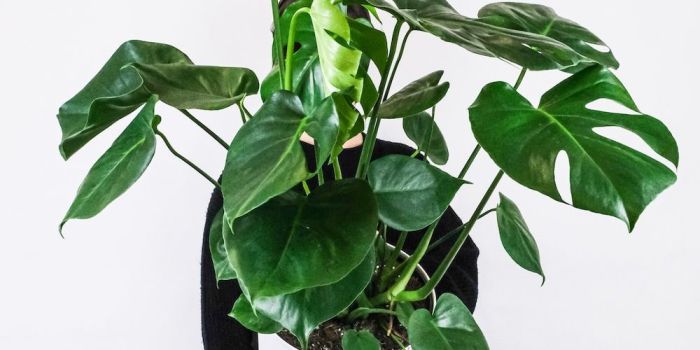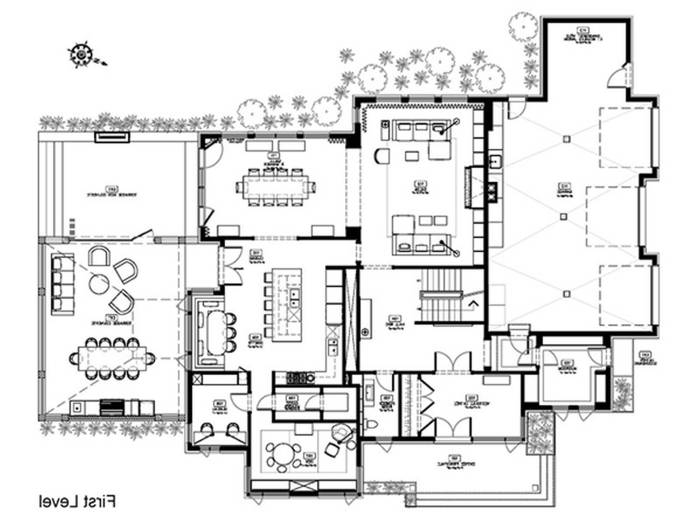Embark on a journey to discover the world of best draping houseplants, where cascading foliage and graceful vines create an enchanting ambiance within your living spaces. From cascading Pothos to trailing String of Pearls, these plants add a touch of nature’s elegance to any room, purifying the air while bringing a sense of tranquility.
Whether you’re a seasoned plant enthusiast or just starting your indoor gardening adventure, this comprehensive guide will equip you with the knowledge and inspiration to select, care for, and showcase these captivating plants in your home.
Draping Houseplants for Beginners: Best Draping Houseplants

Draping houseplants is a popular and stylish way to add greenery to your home. It can create a lush, tropical atmosphere and can help to purify the air. Draping plants are also a great way to add color and texture to a room.
There are many different types of plants that can be used for draping. Some of the most popular include:
- Pothos
- Spider plants
- Philodendrons
- English ivy
- String of hearts
When choosing plants for draping, it is important to consider the size and shape of the plant, as well as the amount of light it will receive. You will also want to choose plants that are relatively easy to care for.
There are many different ways to drape plants. Some of the most popular methods include:
- Hanging them from the ceiling
- Placing them on a shelf or bookcase
- Training them to climb up a trellis or wall
- Using them as a table centerpiece
Draping houseplants is a great way to add beauty and style to your home. With a little creativity, you can create a lush, tropical oasis that will make you feel relaxed and refreshed.
Types of Draping Houseplants

Draping houseplants are a beautiful and versatile way to add life and color to your home. They can be used to create a lush, tropical atmosphere or to add a touch of elegance to a more formal space. There are many different types of draping houseplants to choose from, each with its own unique characteristics and care requirements.
Here is a table of some of the most popular types of draping houseplants, along with their common names, scientific names, and care requirements:
| Common Name | Scientific Name | Care Requirements |
|---|---|---|
| Spider Plant | Chlorophytum comosum | Bright, indirect light; water when the soil is dry to the touch |
| Pothos | Epipremnum aureum | Low to bright, indirect light; water when the soil is dry to the touch |
| Philodendron | Philodendron spp. | Low to bright, indirect light; water when the soil is dry to the touch |
| String of Pearls | Senecio rowleyanus | Bright, indirect light; water sparingly, allowing the soil to dry out completely between waterings |
| Burro’s Tail | Sedum morganianum | Bright, indirect light; water sparingly, allowing the soil to dry out completely between waterings |
When choosing a draping houseplant, it is important to consider the amount of light your space receives, as well as the amount of care you are willing to provide. Some draping houseplants, such as spider plants and pothos, are very easy to care for and can tolerate a wide range of light conditions.
Others, such as string of pearls and burro’s tail, are more delicate and require more specific care.
Best draping houseplants, such as pothos and spider plants, can add a touch of greenery and elegance to any home. Plants are a great way to improve air quality and bring life to a space. For those looking for the best draping houseplants, there are many options to choose from.
With a little care, draping houseplants can add beauty and life to your home for years to come.
Care and Maintenance of Draping Houseplants

Draping houseplants add a touch of elegance and drama to any room, but they require proper care to thrive. Here’s a comprehensive guide to ensure your trailing beauties stay healthy and vibrant.
Proper care includes providing optimal lighting, watering, fertilizing, and pruning. Regular monitoring for pests and diseases is also crucial.
Watering
Draping houseplants prefer evenly moist soil, but avoid overwatering. Allow the top inch of soil to dry out before watering again.
Best draping houseplants add a touch of elegance and greenery to any room. For those seeking a versatile way to showcase these plants, 8 Inch Hanging Planters: A Versatile Addition to Indoor Décor offers a stylish solution. These planters, available in various materials and designs, provide ample space for draping houseplants to cascade down, creating a lush and inviting ambiance.
During summer, water more frequently (every 5-7 days), and reduce watering during winter (every 10-14 days).
Use lukewarm water and avoid getting water on the leaves, as this can promote fungal diseases.
Fertilizing
Fertilize draping houseplants every 2-3 weeks during the growing season (spring and summer) with a balanced liquid fertilizer.
Follow the manufacturer’s instructions for dilution and application. Avoid over-fertilizing, as this can burn the roots.
Pruning
Regular pruning encourages new growth and maintains the desired shape of your draping houseplants.
Remove dead or damaged leaves and stems. You can also trim back overgrown vines to control their length and promote bushier growth.
Use sharp, clean shears for pruning to prevent tearing or bruising the stems.
Best draping houseplants, such as pothos and philodendron, add a touch of greenery and life to any room. For those seeking to elevate their interiors, Elevate Your Interiors with Large Indoor Hanging Pots: A Comprehensive Guide provides valuable insights into selecting and caring for large indoor hanging pots.
By incorporating these tips, you can create a lush and inviting atmosphere with the beauty of best draping houseplants.
Common Problems
Draping houseplants can face common problems like pests, diseases, and nutrient deficiencies.
Inspect your plants regularly for signs of infestation, such as aphids, mealybugs, or spider mites. Treat infestations promptly with insecticidal soap or neem oil.
Fungal diseases like powdery mildew or root rot can also affect draping houseplants. Provide good air circulation and avoid overwatering to prevent these issues.
Yellowing leaves can indicate nutrient deficiencies, especially nitrogen deficiency. Fertilize your plants regularly to address this issue.
Using Draping Houseplants in Home Decor

Draping houseplants add a touch of elegance and natural beauty to any home. Their cascading foliage can create a dramatic effect, soften harsh lines, and add a sense of tranquility to a space. Here are some ideas for incorporating draping houseplants into different rooms of your home:
Living Room
- Hang a trailing pothos or philodendron from a macrame hanger or shelf to add a touch of greenery to your seating area.
- Place a large Monstera deliciosa or Swiss cheese plant in a corner to create a lush, tropical oasis.
- Use a trailing ivy or spider plant to soften the lines of a fireplace or bookcase.
Bedroom
- Hang a string of pearls or hoya from the ceiling to create a romantic and ethereal ambiance.
- Place a trailing peace lily or snake plant on a nightstand to purify the air and add a touch of greenery.
- Use a trailing fern or maidenhair fern to create a lush, jungle-like atmosphere.
Kitchen
- Hang a trailing rosemary or basil plant from a shelf above your stove to add a touch of freshness and fragrance.
- Place a trailing orchid or anthurium on a windowsill to brighten up the space and add a touch of color.
- Use a trailing peperomia or arrowhead plant to add a touch of greenery to a kitchen island or countertop.
Advanced Techniques for Draping Houseplants

As you gain experience in draping houseplants, you may want to try more advanced techniques to create unique and eye-catching displays. Here are a few ideas to get you started:
Using Trellises and Hanging Baskets
Trellises and hanging baskets are great ways to add height and dimension to your draping houseplants. Trellises can be used to support climbing plants, such as pothos or philodendron, while hanging baskets can be used to display trailing plants, such as ivy or spider plants.
When choosing a trellis or hanging basket, be sure to select one that is the appropriate size and style for your plant.
Creating Living Walls
Living walls are a great way to add a touch of greenery to your home while also purifying the air. To create a living wall, you will need to install a trellis or other support structure on a wall. Then, you can plant your draping houseplants in pots or containers and attach them to the support structure.
For those seeking to enhance their indoor aesthetics while improving air quality, best draping houseplants offer a solution. Their trailing vines and cascading foliage create a verdant ambiance, while their ability to purify the air adds to their allure. Explore a wide range of these plants, from the graceful Spider Plant to the air-purifying capabilities of the Air Purifying Hanging Plants: Enhancing Indoor Air Quality and Aesthetics , and find the perfect complement to your home décor.
Be sure to water and fertilize your plants regularly, and trim them as needed to keep them looking their best.
Creating Green Sculptures, Best draping houseplants
If you are feeling creative, you can use draping houseplants to create green sculptures. To do this, you will need to shape the plants into the desired shape using wire or other supports. You can then display your green sculptures indoors or outdoors.
Be sure to water and fertilize your plants regularly, and trim them as needed to maintain their shape.
Final Summary
In conclusion, best draping houseplants offer endless possibilities for transforming your home into a verdant oasis. By embracing their unique beauty and implementing the care tips Artikeld in this guide, you can create captivating displays that bring joy, purify the air, and add a touch of the outdoors to your indoor spaces.
Key Questions Answered
What are the benefits of draping houseplants?
Draping houseplants offer numerous benefits, including air purification, improved mood, reduced stress, and enhanced aesthetics.
How do I choose the right draping houseplants for my home?
Consider factors such as the amount of light available, the size of the space, and your personal preferences when selecting draping houseplants.
What are some creative ways to drape houseplants?
Get creative by using trellises, hanging baskets, macrame hangers, or even repurposed items to display your draping houseplants in unique and eye-catching ways.